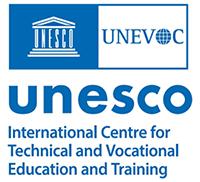
The UNESCO-UNEVOC International Centre: Who We Are | What We Do | Working With Us | Get in Touch
The UNEVOC Network: Learn About the Network | UNEVOC Network Directory
For Members: UNEVOC Centre Dashboard
Thematic Areas: Inclusion and Youth | Digital Transformation | Private Sector Engagement | SDGs and Greening TVET
Our Key Programmes & Projects: BILT: Bridging Innovation and Learning in TVET | Building TVET resilience | TVET Leadership Programme | WYSD: World Youth Skills Day
Past Activities: COVID-19 response | i-hubs project | TVET Global Forums | Virtual Conferences | YEM Knowledge Portal
Our Services & Resources: Publications | TVET Forum | TVET Country Profiles | TVETipedia Glossary | Innovative and Promising Practices | Toolkits for TVET Providers | Entrepreneurial Learning Guide
Events: Major TVET Events | UNEVOC Network News
TVET Assessment Center was established on April 18, 2016 by the Government resolution No.216 and runs its activity for two years. The TVET Assessment center has been working in collaboration with 91 TVET schools, polytechnic colleges and over 800 short term course providers so far. And cooperate with professional associations and employers in areas, in particular, analysis and conclusion on competence based curriculum of TVET providers, conduct assessment of TVET school graduates, verification of assessment, certification, and conduct assessment of qualification level of vocational employees and upgrade their qualification levels.
Furthermore, the TVET Assessment Center is making steps to compose a consolidated database system that contains all information/data related to assessment, verification and certification. In further, the organization aims to conduct assessment of qualification level of citizens who are working and who apply for RPL.
.jpg)
